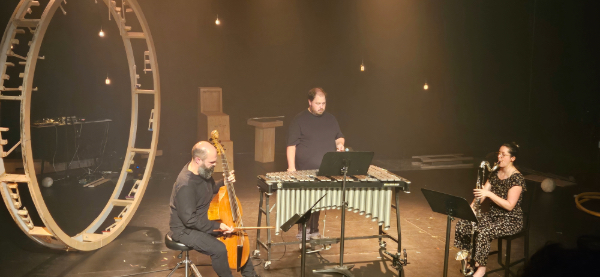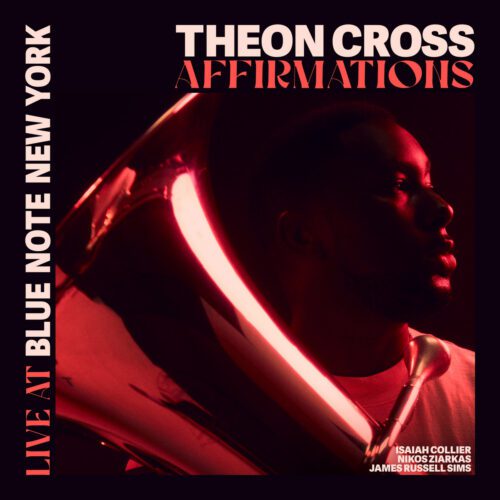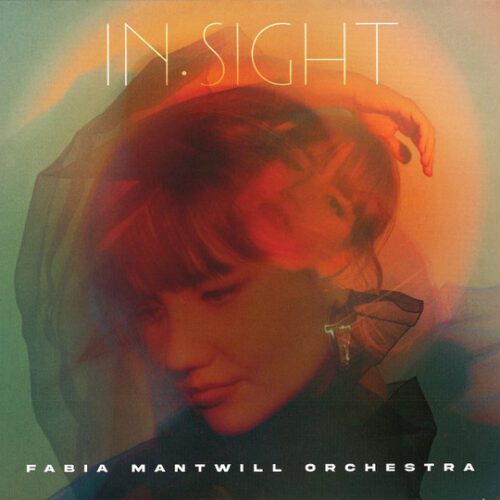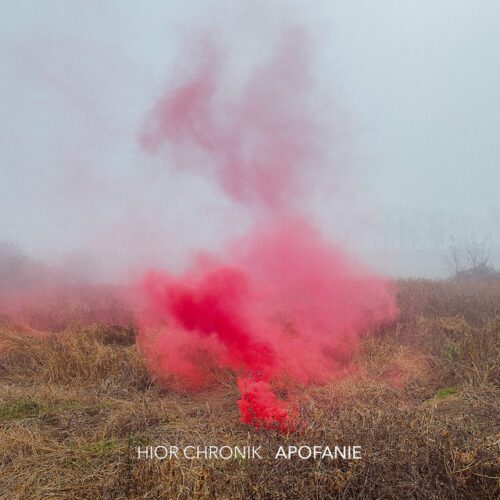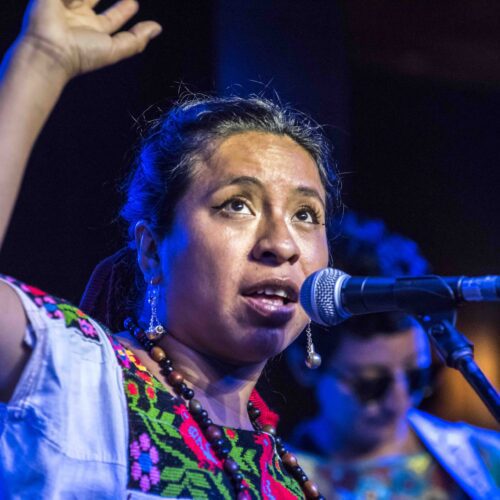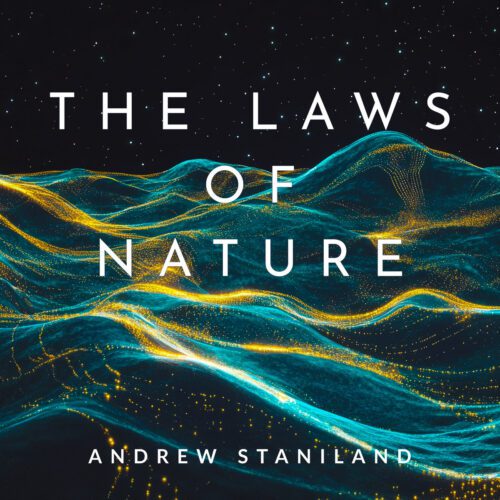A repeat of the double bill on October 5 at La Chapelle in the Québec Musiques Parallèles program. Opening the evening, the artist duo of Chantale Boulianne and Sara Létourneau presented for a second time their performance piece Ce qui reste quand la peau se détache du corps, which we were able to appreciate in person the day before (see our review here).
The second half of the evening was taken up by the members of E27, a Quebec City-based ensemble and creative organization. Founded in 1999 by Patrick Saint-Denis, Alexis Lemay and Yannick Plamondon, the organization has been working for 25 years to discover, create and disseminate new music in Quebec, and particularly in the National Capital Region, carving out a lasting place for itself in the creative music ecosystem. However, the ensemble’s visits to the metropolis are infrequent. As Alain Brunet pointed out in a recent interview with Isabelle Bozzini, an initiative like QMP’s, which encourages the dissemination of genres and the exchange of protagonists, is both timely and welcome for the free circulation and sharing of musical universes.
The work on the program was a piece by Pierre-Yves Martel, Chance Variations, premiered in 2023 by E27. The piece features a relatively motley crew: a viola da gamba, with Martel himself as performer, a vibraphone played by Raphaël Guay – who is also E27’s artistic director – and a bass clarinet played by Mélanie Bourassa. The work “incorporates aleatoric procedures and explores the notion of repetition through superimposed melodic cells that gradually evolve over time”. A little like Davachi’s work the day before, the notion of time and its elasticity is present in Martel’s work and offers, after the sensory and visual intensity of Létourneau and Boulianne’s performance, a moment of weightlessness and serene floating for the listener. The play of textures was, however, more varied and the form much more active.
Evolving in a structure where note shape and selection have been determined at random (using dice) and where rhythms, note sequences and registers have been freely constructed, the performers exchange bass notes to sustain a random harmony where the various constituents create a play between the pitches and timbres of the instruments. As the piece progresses, moments of dissonance become perceptible, mainly from the strings, which create a slight element of tension, while the clarinet and vibraphone are unperturbed. Tonal anchor points where the timbres of the instruments meet, creating a kind of sonic saturation by harmonics of gentle intensity. The result is a meditative, deeply introspective piece that continues to capture our attention.
Putting together a double bill is always a balancing act between creating variety and discovery without creating too great a stylistic imbalance between the parts. QMP’s Montreal program is very fair in this respect, offering both complex and more intimate works. However, care must be taken not to fall into too marked a stylistic opposition, in order to keep the listener’s attention.
Photo credit: Alexandre Villemaire
